In the article “Bicycle chain wear (elongation),” I explained how chain wear happens and how it affects the chain’s performance. There, I mentioned that roller wear doesn’t affect chain’s performance. The only thing that affects performance is chain’s elongation (change of pitch) – i.e. inner plates to pin contact area wear. This article demonstrates that in a clear(er) way.
To demonstrate that, I took a chain and a chainring with very little wear (far from needing replacement). Also, for comparison, I used a worn chain – to show the difference that worn pin to inner plate area makes, even with rollers still in tact.
Table Of Contents (T.O.C.):
1. Test aparature
Rollers are taken out of a part of a “new” chain, while on the other parts of the same chain the rollers were left as they were. If roller wear affects chainring engagement, this will demonstrate 100% worn rollers effect. 🙂
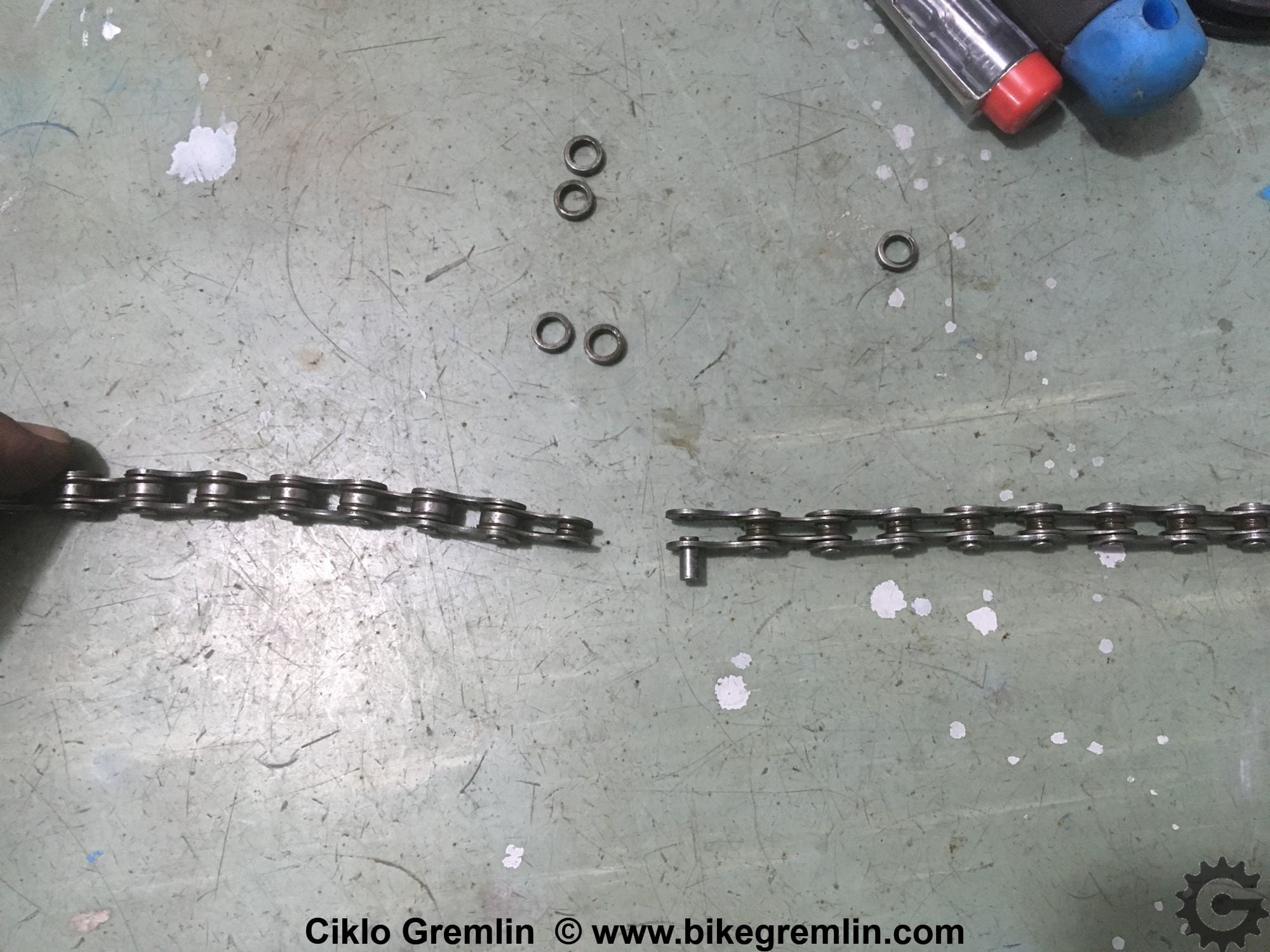
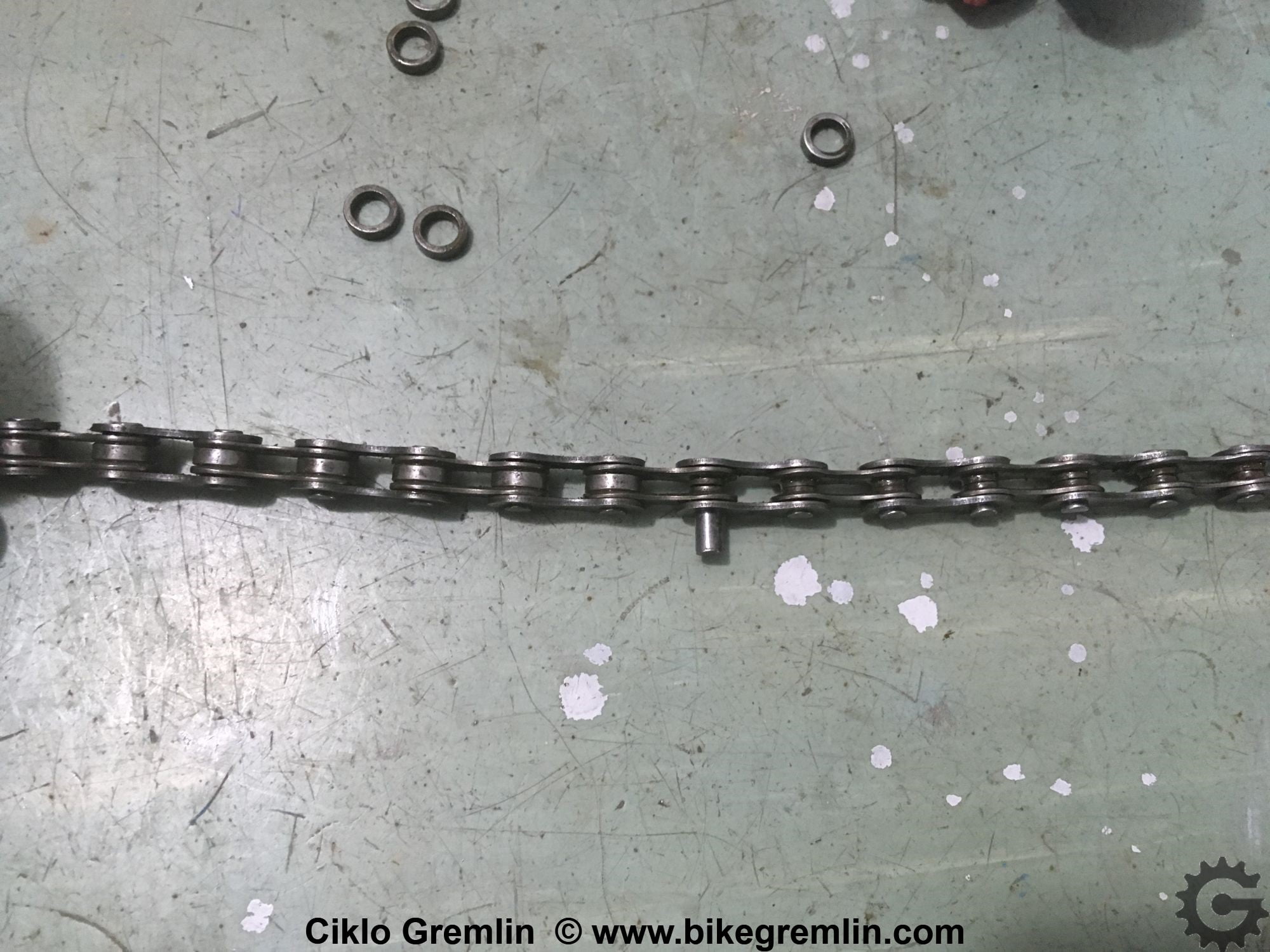
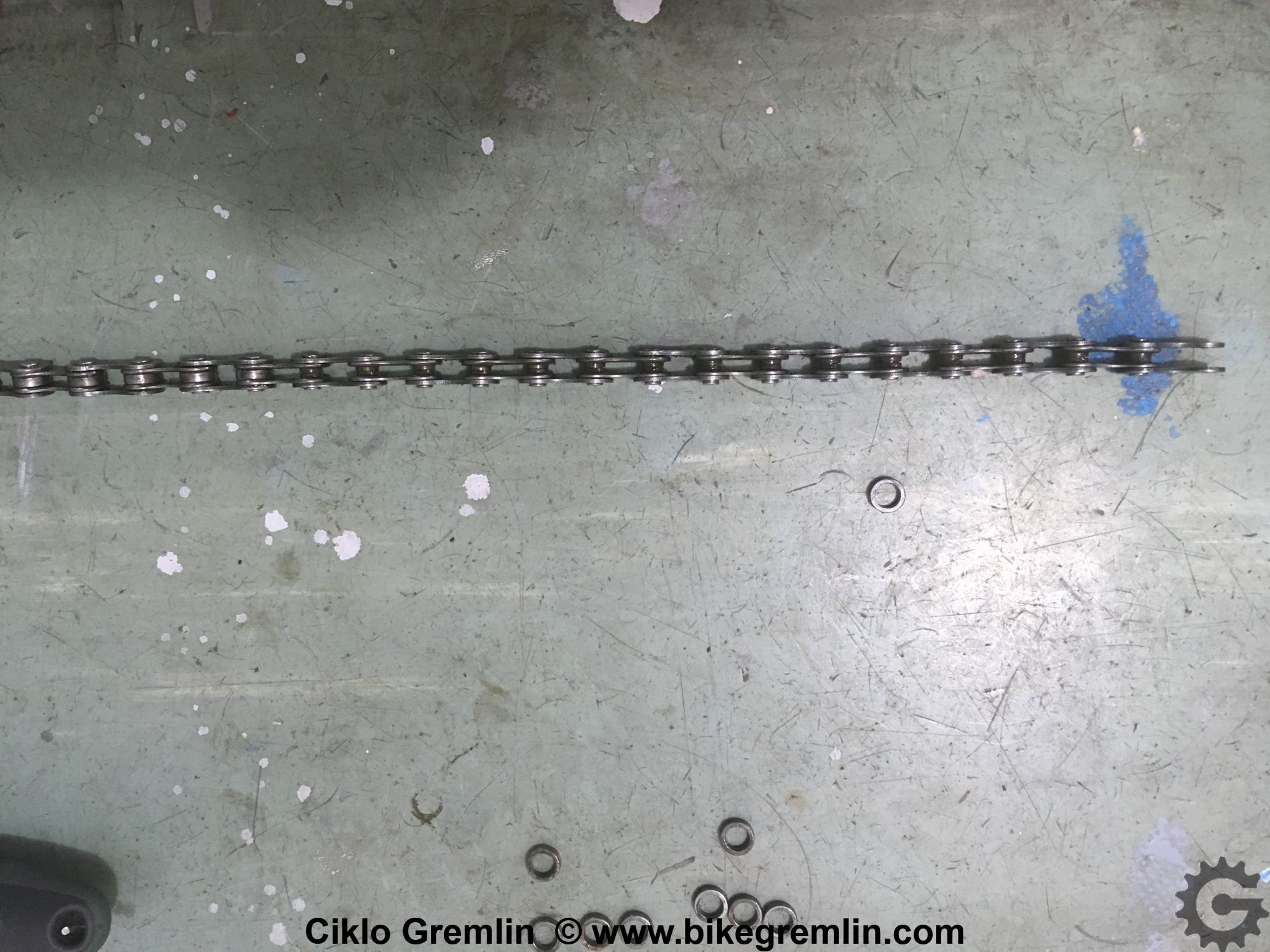
Pictures 1a, 1b, and 1c
Part of the chain with the rollers removed was marked – for easier orientation.
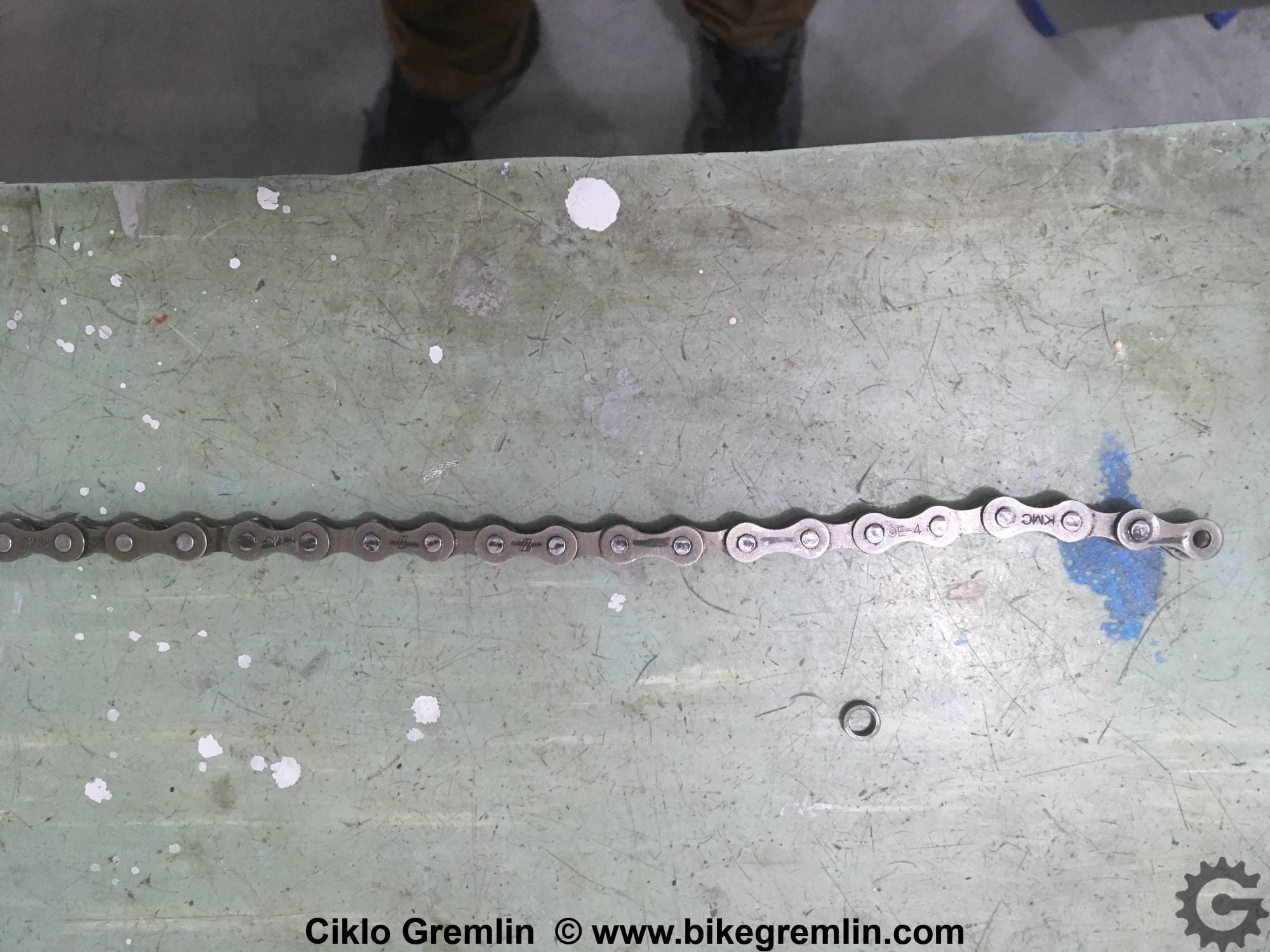
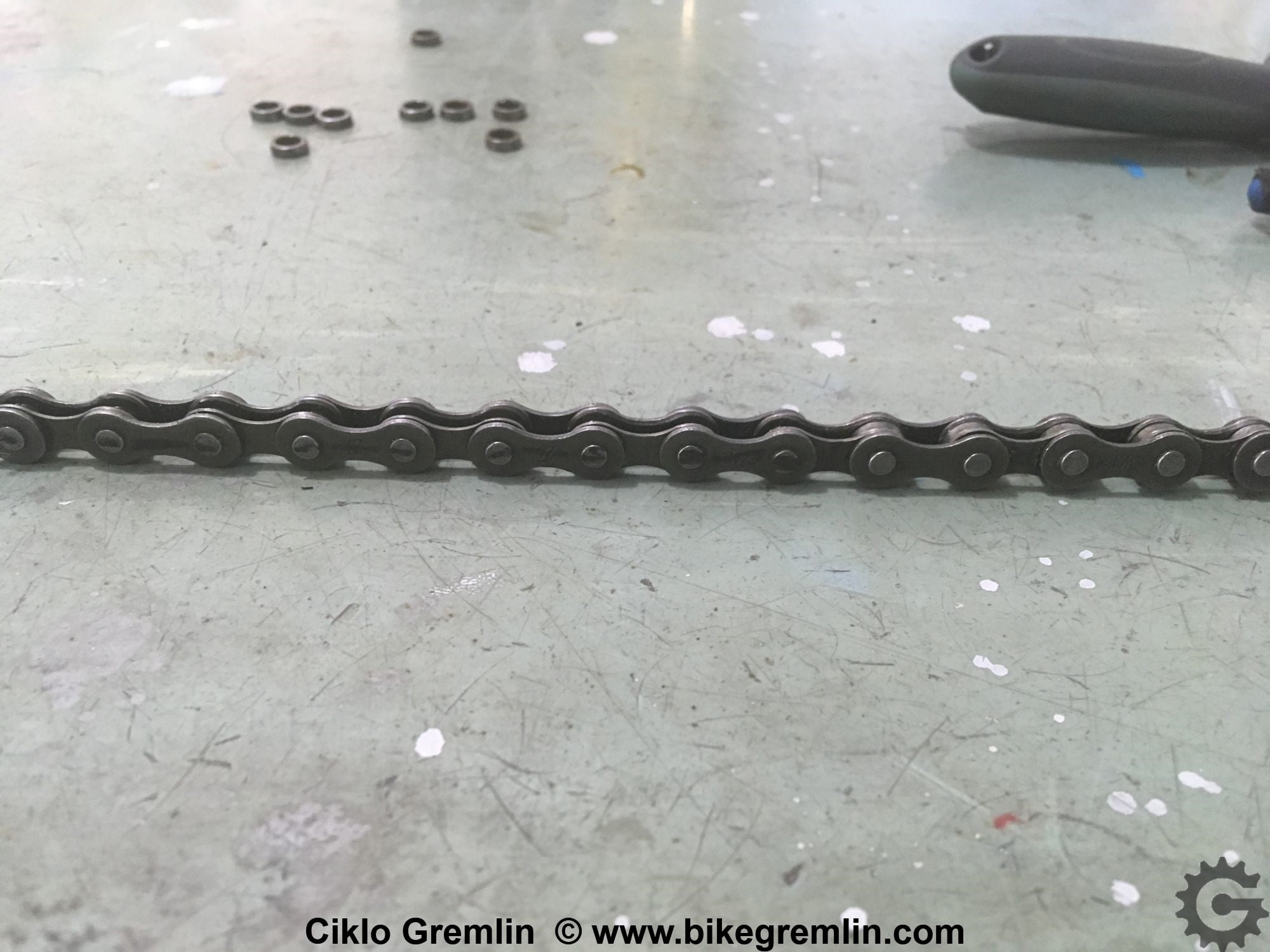
Pictures 2a, and 2b
Test setup was simple – a vice and a heavy plank of wood.
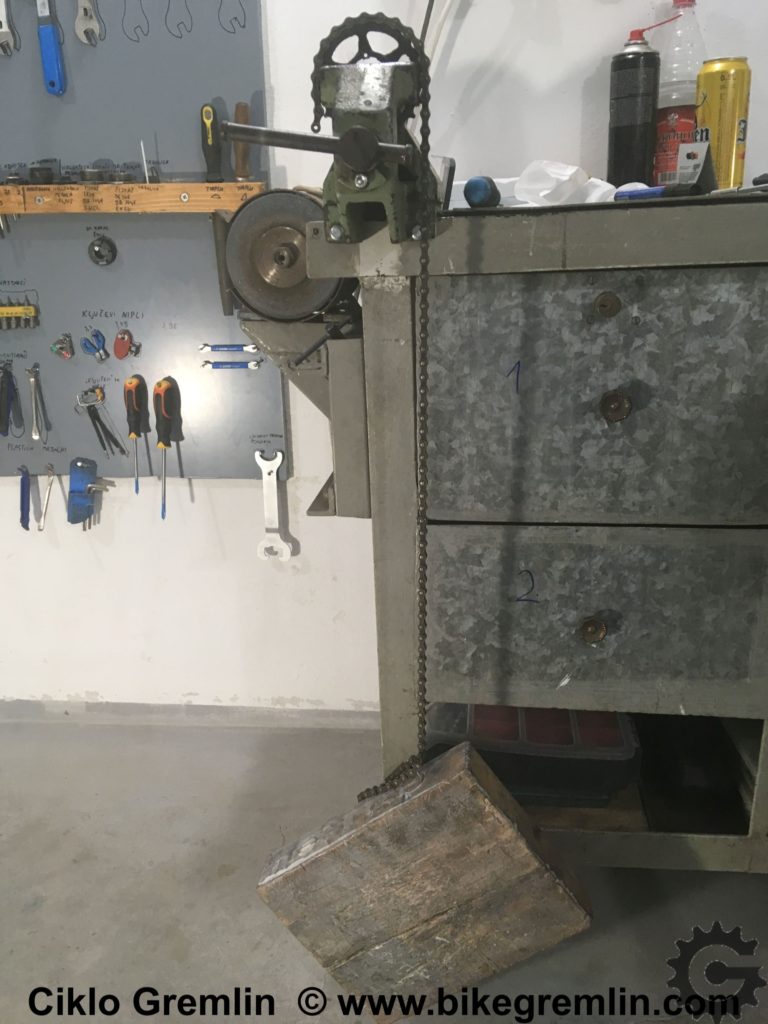
Picture 3
It is not clear in the picture, but the wood doesn’t touch the ground during the test. Even in this setup it hangs a few cm above it.
2. Test (demonstration)
In pictures 4 and 5 it is shown how a chain without the rollers (left) and with the rollers (right) engages with the chainring. There is a marked line along the chain engagement contours drawn on the chainring – for reference (not very visible unfortunately).
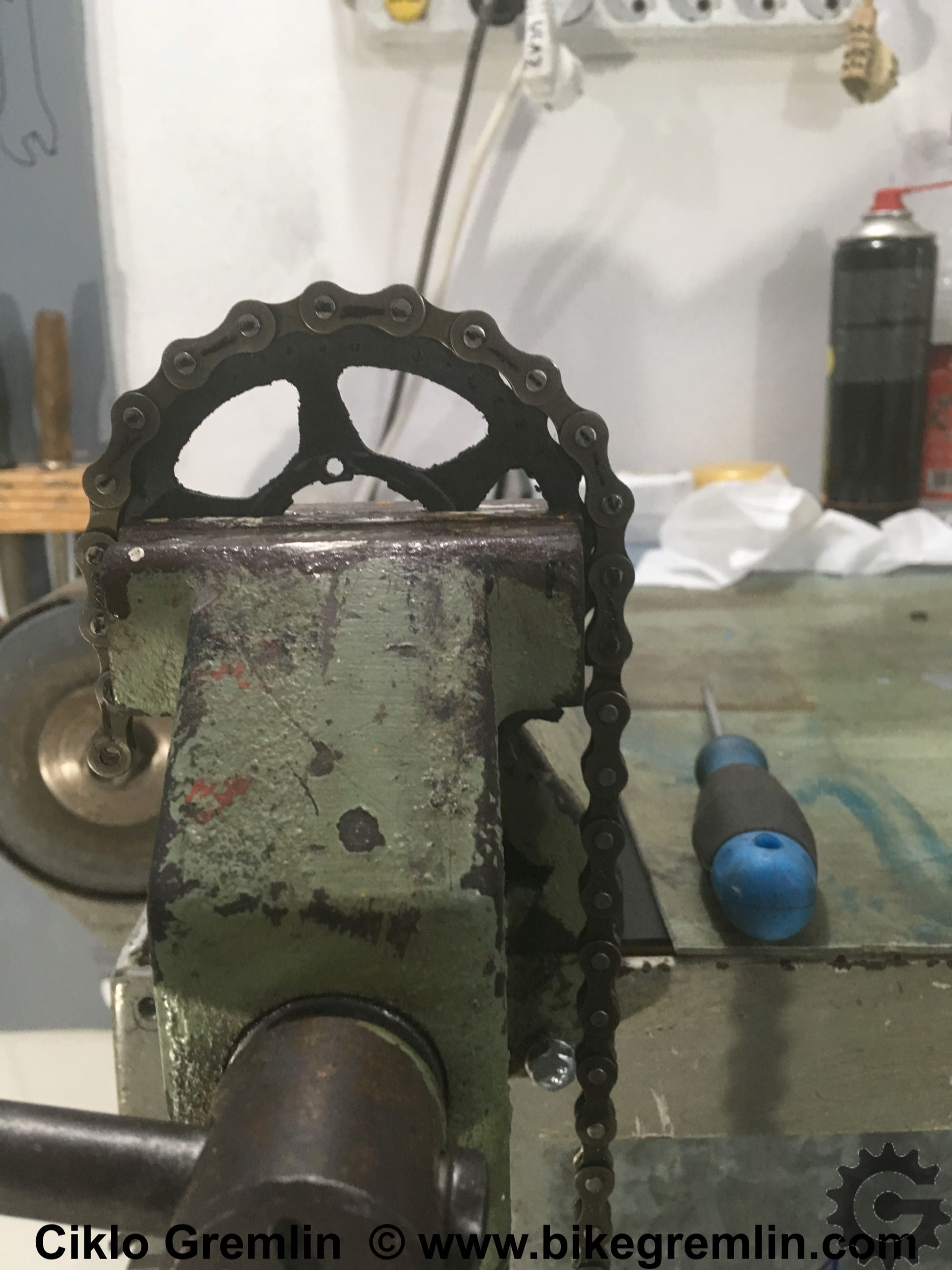
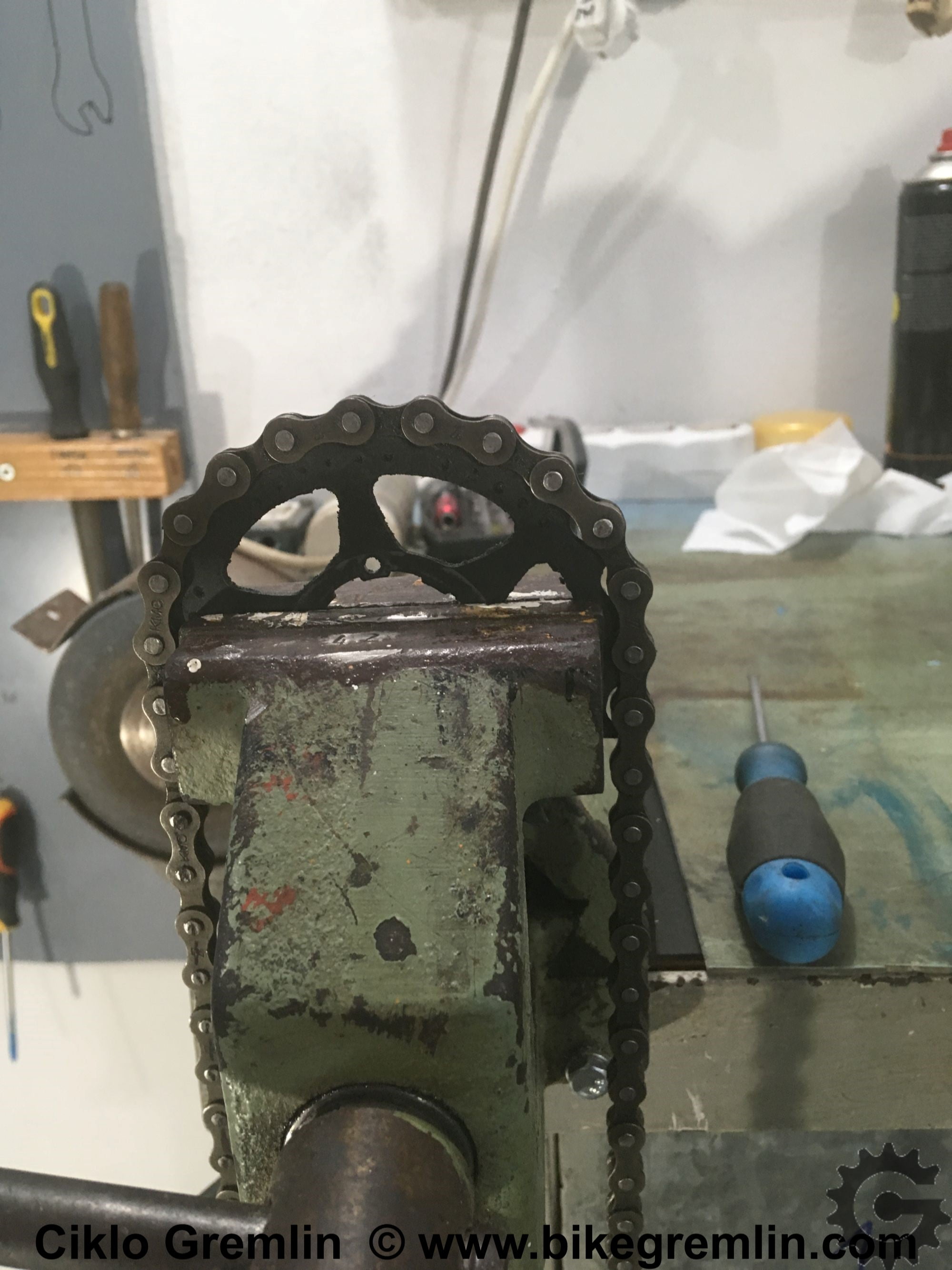
Pictures 4a, and 4b
Zoomed in:
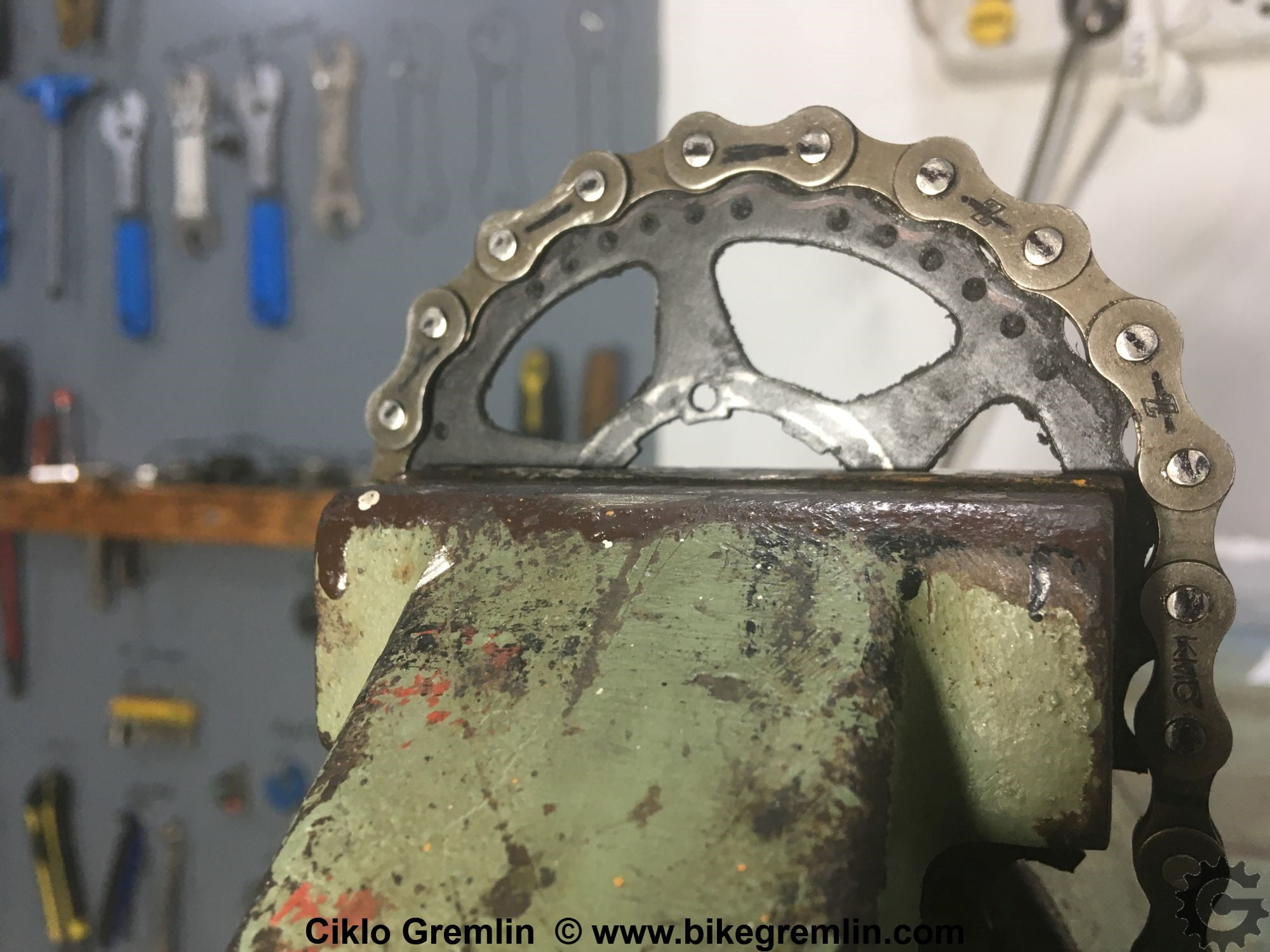
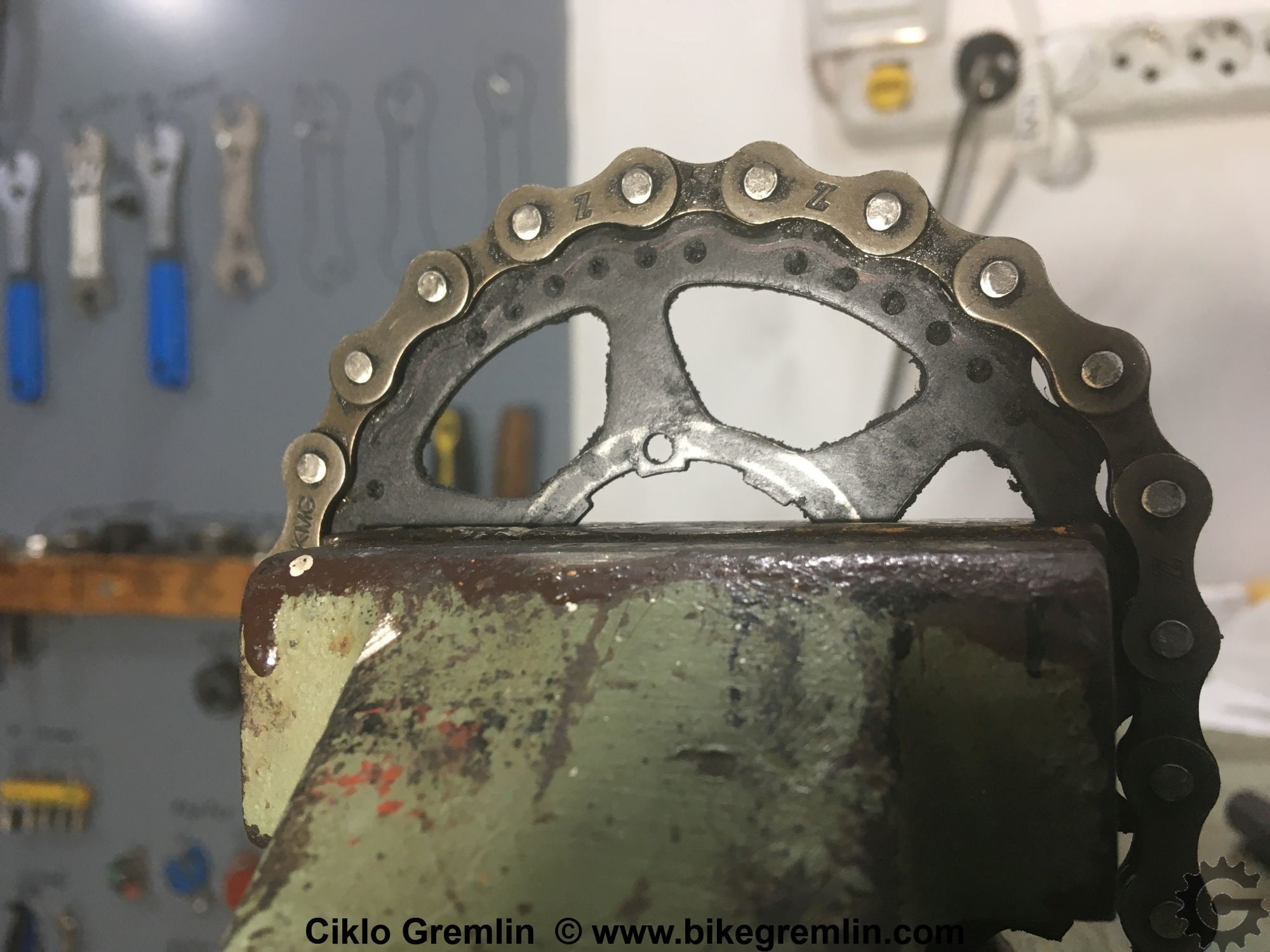
Pictures 5a, and 5b
As can be seen from the pictures, engagement “quality” is the same for both the chain with and without the rollers. Chain without the rollers is moved slightly more to the right, but it doesn’t climb off the chainring teeth. For comparison, picture 6 shows how a worn chain (with a longer pitch) “climbs” on the chainring teeth, almost disengaging:
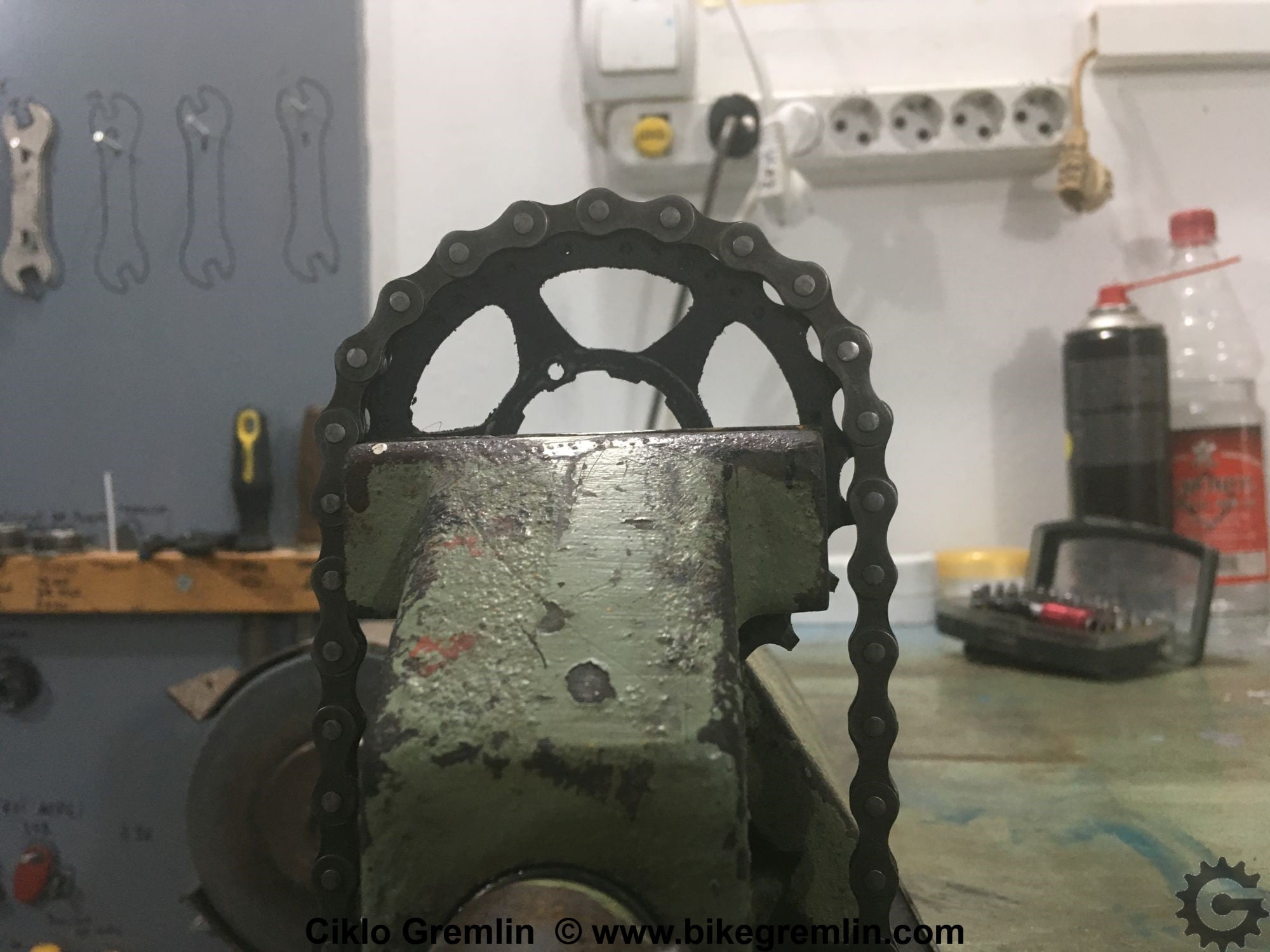
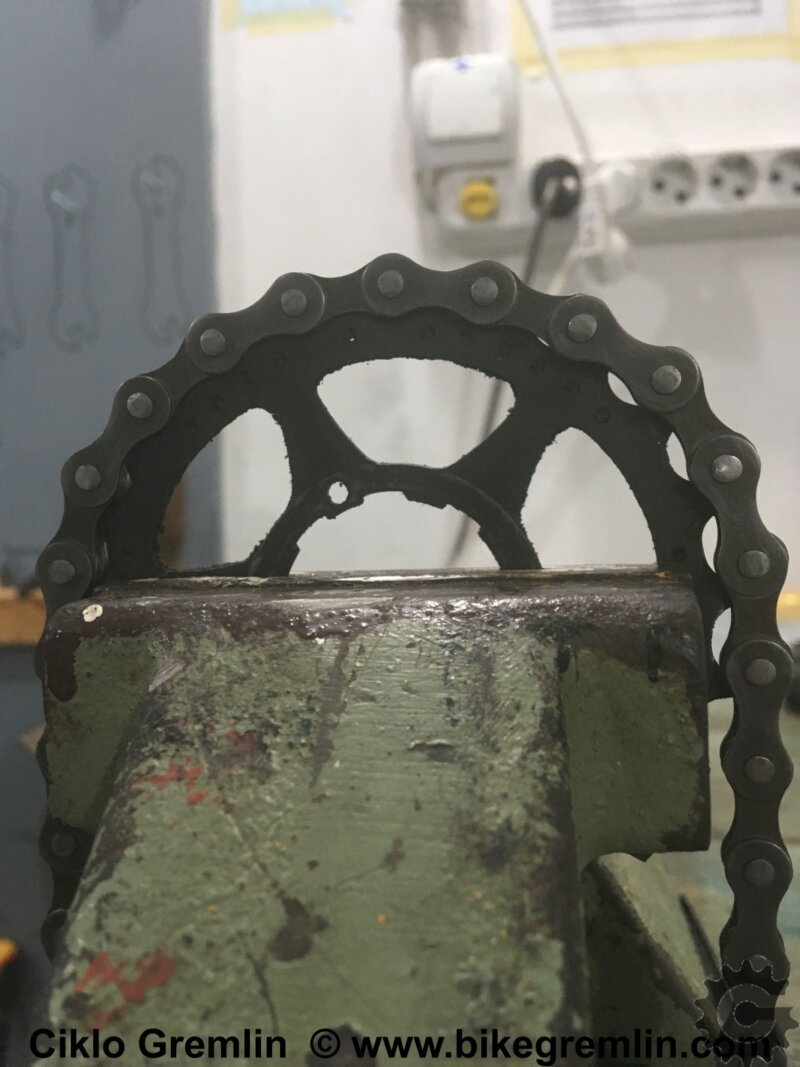
Pictures 6a, and 6b
A chain that isn’t loaded (under tension) will sit deeper between the chainring teeth if it’s rollers are worn, but when a chain is in use, under tension, it will tend to climb as high as possible over the chainring teeth. The amount of climbing is limited by chain’s pitch and the chainring teeth profile. As was explained in the post about chain wear, roller wear doesn’t affect pitch (and definitely doesn’t alter chainring teeth profile), so it doesn’t affect the performance (and engagement) of a loaded chain in use.
3. Conclusion
Roller wear does not affect chain engagement. Plain and simple. 🙂
It should be noted that for this demonstration an extreme situation was simulated – a chain without any rollers. So roller wear that happens on a chain – in fractions of a mm is definitely not relevant for chain’s performance.
A separate post explains how to measure chain wear and when to replace the chain.
A video demonstration of this experiment:
Last updated:
Originally published:

Thank you for a clear explanation on roller wear in contrast to chain elongation.
However, my question would be : “is there a limit to roller wear? ”
In my case the chain is elongated by about 0.25 to 0.5% after ~1000miles.
The play in the rollers is in the order of 0.7 mm. i.e. the I.D. of the roller is about 0.7 mm larger than the pin O.D.
Is this still OK or would it cause a problem?
The chain runs smooth and shifts well.
Kind regards
Robert
I have never seen a chain with a roller wear so great that it affects engagement.
Even the highly worn, severely elongated chains (well over 1% elongation) still have their rollers with more than enough material.
It’s the elongation that creates problems, not roller wear.
Relja,
Thank you very much for your quick and clear response.
It is good to hear and get advice from knowledgeable people
I have just finished building myself a tool from an old hacksaw blade to measure the chain elongation without the roller wear effect and it works well.
Thanks again
Robert